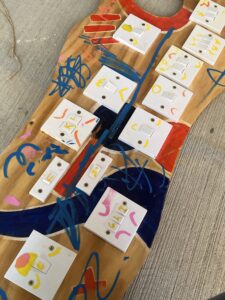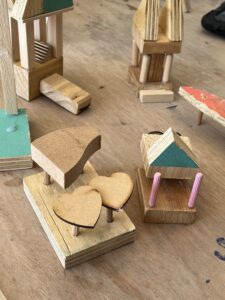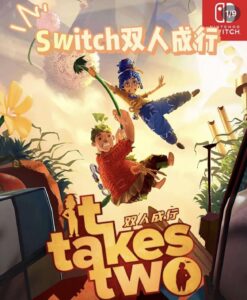Week 4_Educational Toolkits and our today’s workshop
Today we had a wonderful experience in the Courtyard Studio space at Edinburgh Sculpture Workshop. And it made me have a deeper think of Educational Toolkits.
Actually, we’ve talked about ‘Toolkits’ for nearly two weeks, but what are toolkits really? As what in our handbook:
Toolkits – generally speaking – will provided a learner with almost* everything they need to learn.
I suppose this definition is very accurate. In fact, the resources of any organization or individual are limited and disordered. Toolkits are the process of integrating our existing resources. And educational toolkits mean those toolkits are educational. Then what means Artists’ Toolkit? In my opinion, I think the artist’s’ toolkits must have those features: reusable, easy to learn, productive, and life related (after all, art comes from life). The artists’ toolkits could be concieved a work of art in its own right, or, simply, be a package of learning materials or instructions from which an art work might be created by a ‘learner’. We can consider them as a kind of expression of art in educational toolkits.
Today, we first visited the artists’ studios, which we had never experienced before in our education experience. We found there were really sophisticated equipments in the studios, and all of those can be used by applying. It was a freedom environment for artists to create their art works with using those ‘art toolkits’ more than those equipments.
Then, we were divided in three groups to experience three kinds of art assignment one by one. Our first task was making an ‘children signal’, aiming at connecting with other child in a strange world, we put flags, turn on and off the switches and tied ropes. Those work let me be a child, like our teacher said: it was hard to be an adult.😭And it was really fun to do what children do when you are an adult.


The second art assignment was using wood to make your favorite shape. To be honest, this was my first time of approaching wood stuff, I was so nervous of messing up. But our teacher helped us with almost every step, which let me adapt. We look for the materials we need from the wood and refer to some completed works on the table. This is a process of deconstruction and reconstruction. Similarly, it is also a process of searching for resources in Art Toolkits and secondary integration.
This gives me a deeper understanding of Toolkits and a better answer to the problem scenario at the beginning:
1/We need to make clear our OER direction first, and what is the main theme? What should be included?
2/Second, think about our resources, materials, book resources, thinking resources and even human resources;
3/Integrate and stack resources;
Basically, our toolkit is ready. Next, we should think about how to complete a perfect OER platform?
After we have built our toolkit with constructivism, we should adopt connectionism and deconstruction, think about which resources can be used in general, have commonalities, and which resources are specific roles, and organically combine these resources. Even though I say this in an abstract way, when we really use this logic, it will be clear.
In addition, we also made clay sculptures. This is a clay figurine in a game character I made. During this process, everyone in our group was very happy and focused. We enjoyed such a perfect workshop!






I think you have a great opinion into the artists’ toolkit, especially the part that have to be life related. The reason why art becomes art is that it extracts profound educational significance and inspires people through the re-creation of well-known life; or it expresses people’s good expectations for life. The recording of three art assignments in the article is detailed and interesting, and I love your thoughts on participating in them. Adults are no longer able to think as creatively as children, and for many people, doing what children do when they grow up can be confusing or uninteresting, so it’s invaluable that you can happily enjoy the workshop.
Practice is the source of knowledge, everything is formed in practice, not only to promote the accelerated formation of the kit is conducive to a clear indication of the direction of OER, through the knowledge and manipulation of wood, clay and other materials, to promote the relative independence of individual learning activities, here the independence does not mean the independence from the group alone but the progress of self-awareness.
The blogger tries to ask a few questions in this post, what does an artist’s kit mean? What is the theme of OER? What should be included, etc.? I think this is a good way to clear your mind. Analyze and answer based on practical content and your own views. In the offline workshop, we were a group, and we cooperated with her very well throughout the whole process. It can be seen that she is a very hard-working and serious classmate.
This post of yours is so meticulously written and really well done. I have been in a group with you in workshop and saw that you were writing according to the order of our tasks in Workshop and you were very much in your own mind with each part. I saw your thinking on the parts made in wood and I think you thought more deeply than I did, you saw it as the process of structuring and rebuilding and also thought about the process of finding resources and secondary integration in the kit, you did a great job of linking our practice to the theory in class, something I hadn’t thought of and it was very inspiring.
Beautiful! Your writing style is interesting. You focus on “what means Artists’ Toolkit?” And explore a deeper understanding of Toolkits. Also, very suitable use of the concept of connectionism and deconstruction, you raised deeper think about which resources can be used in general. The structure of your blog is clear and worth for me learning.